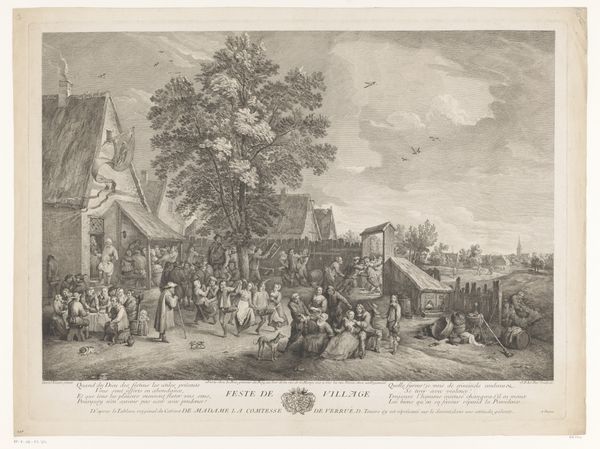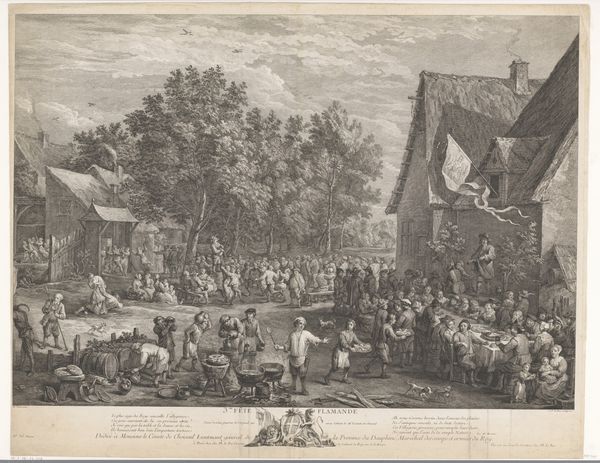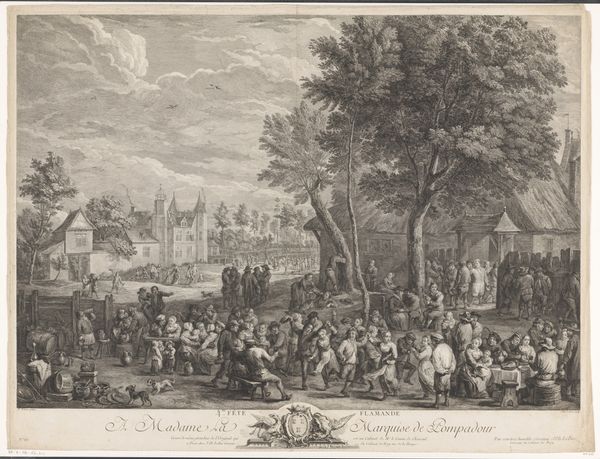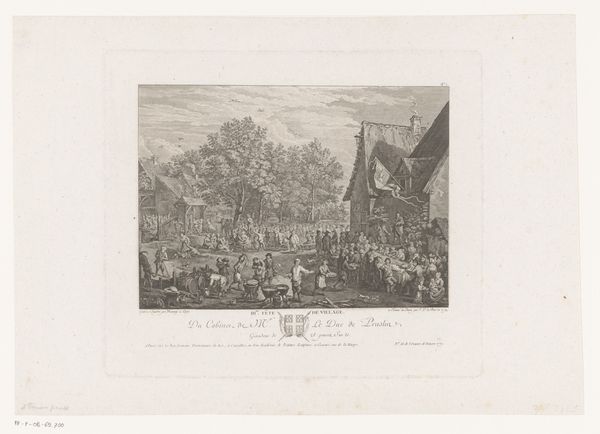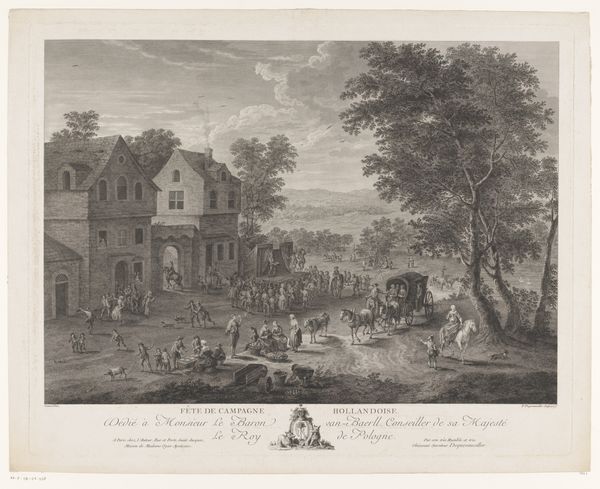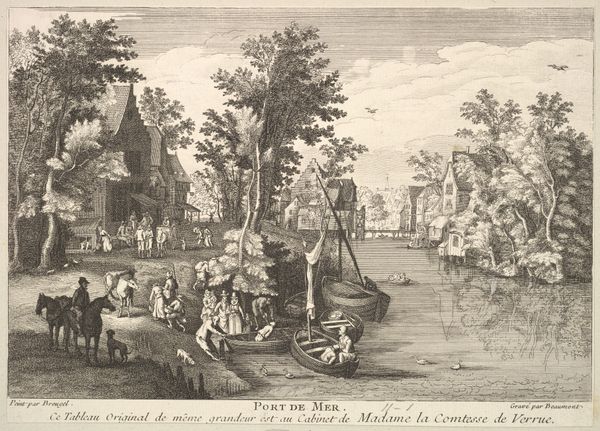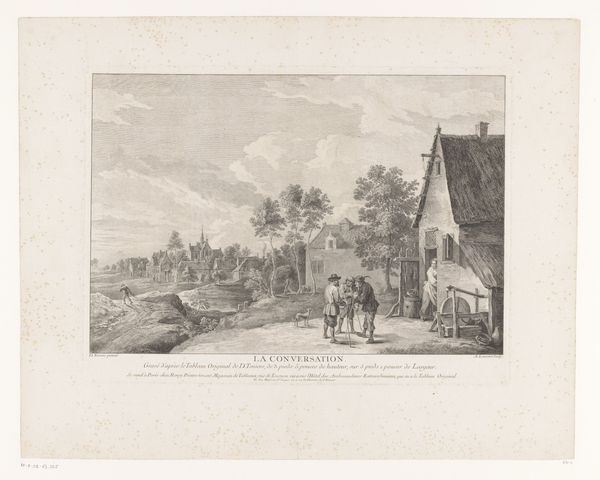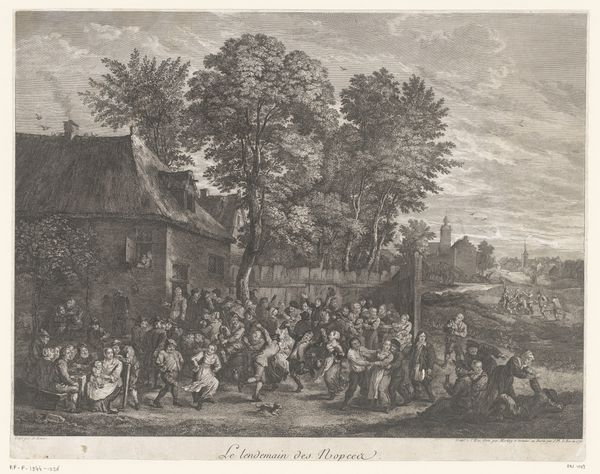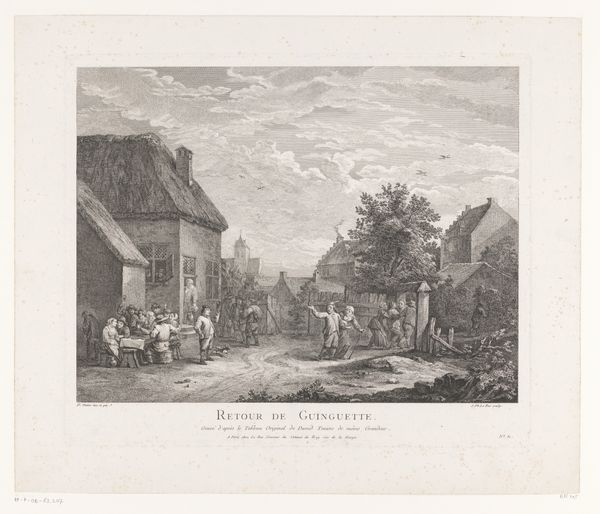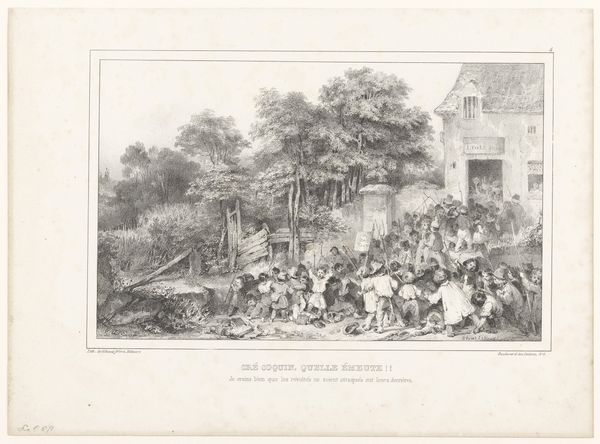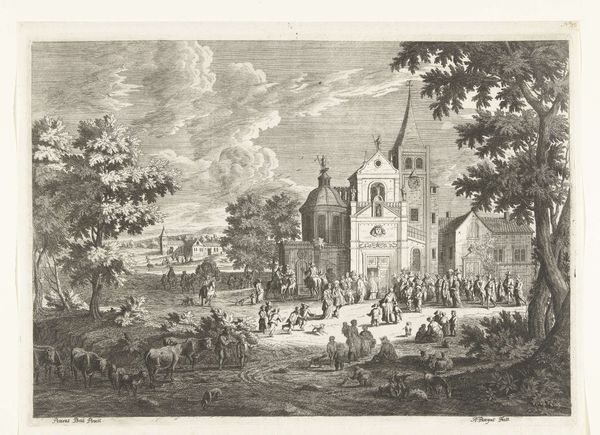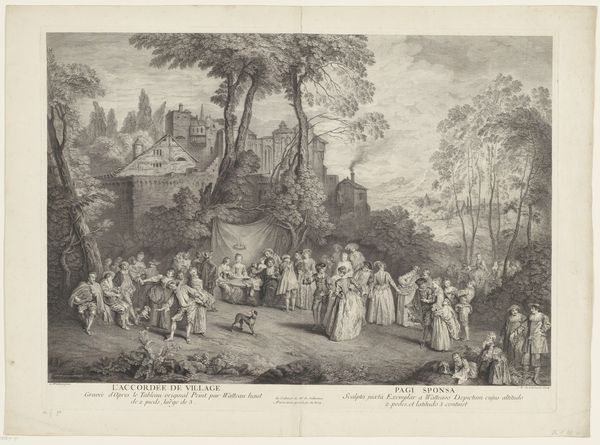
print, engraving
#
baroque
# print
#
old engraving style
#
landscape
#
figuration
#
genre-painting
#
engraving
#
realism
Dimensions: height 499 mm, width 683 mm
Copyright: Rijks Museum: Open Domain
Curator: It's quite lively, wouldn't you say? All the figures engaged in their revelry, caught in a moment of pure festivity. Editor: Indeed. We are looking at "Dorpsfeest," an engraving made in 1736 by Jacques Philippe Le Bas, currently residing in the Rijksmuseum collection. The scene depicts what appears to be a Flemish village festival. Curator: The density of figures is remarkable. The textures created by the engraving process, the lines and shading, give depth to the composition. There's a real tactile quality to it, despite being a print. One can feel the coarse fabrics of their clothes and the weathered surfaces of the buildings. What was involved in making prints like this, typically? Editor: It's a painstaking process involving etching or cutting lines into a metal plate, applying ink, and then pressing it onto paper. Prints such as this were often commissioned, allowing for wider distribution and consumption of art. Think of it as an early form of mass media. Curator: A fascinating point. How would images such as this be presented and valued by contemporary audiences? Editor: These types of scenes were highly popular. Prints were often bound into albums, sold individually, or even used for educational purposes to illustrate various customs. This one, judging by the dedication at the bottom, may have even been connected to aristocratic patronage; note that dedication to "MADAME LA COMTESSE DE FERRUE D'Essoms." Curator: And consider the socio-political impact! "Dorpsfeest" can show people their idealized cultural memory or social order. What social roles are subtly promoted here, through dress and activity? Editor: Indeed, the "Dorpsfeest" offers insights into both the leisure and social structures of the time. Its meticulous rendering and distribution suggest an engagement beyond pure aesthetics; a reflection of social identity through image. Curator: Well, considering how art serves our contemporary lifestyles, studying a picture from the 1700’s still seems pretty on the nose. Editor: Precisely, studying "Dorpsfeest" provides a lens through which we can examine both artistic production and broader historical dialogues about society, class, and representation.
Comments
No comments
Be the first to comment and join the conversation on the ultimate creative platform.
